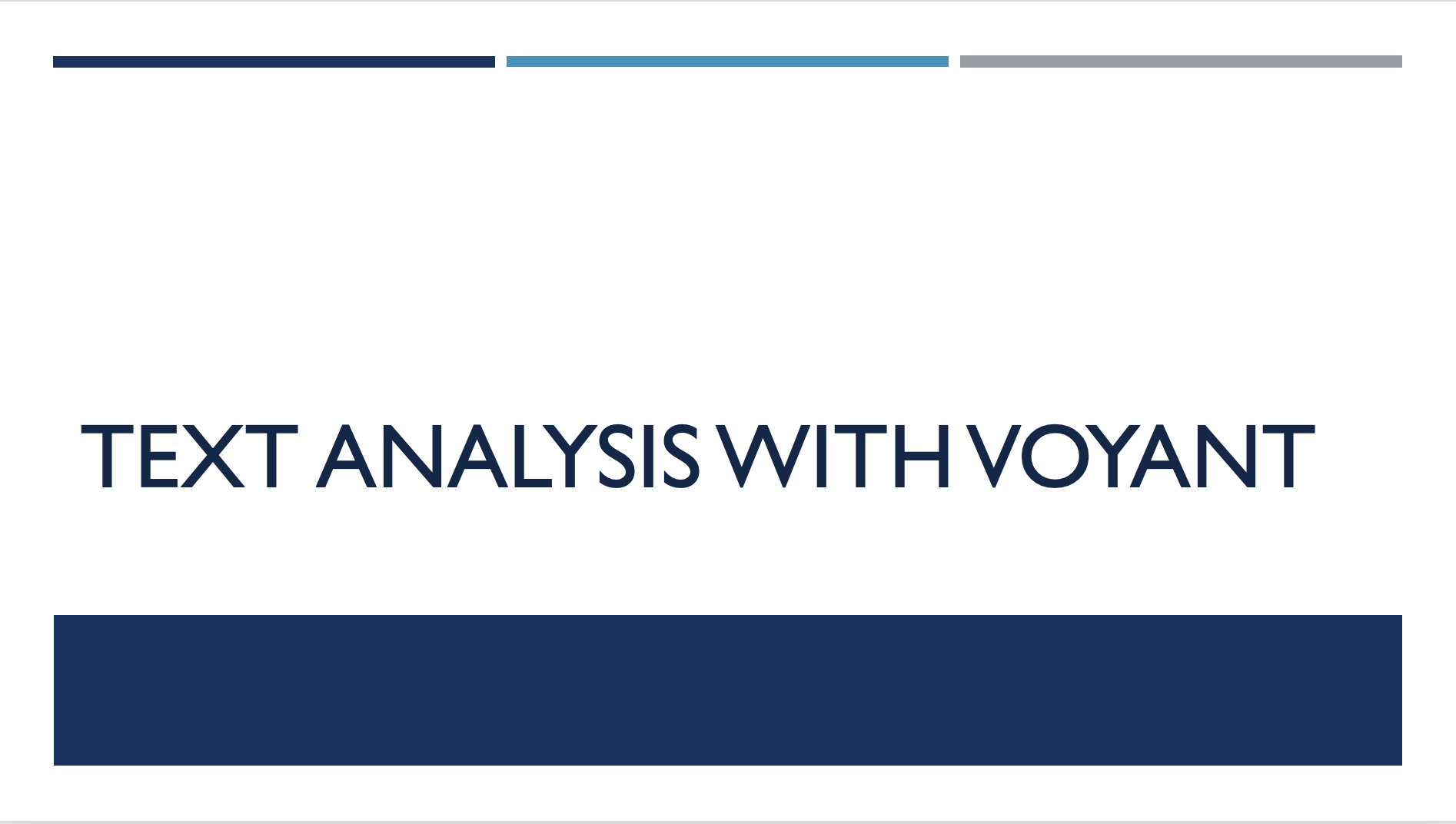Module 4 : Text Analysis with Voyant
In this module, you work with a popular text mining tool called Voyant, which is a web-based reading and analysis environment for digital texts. You will explore different ways to examine and visualize your datasets using the platform.
Module Objectives
- Upload your cleaned dataset to Voyant.
- Experiment with different forms of text analysis to investigate the questions you have about your research dataset.
- Visualized and interpret the analysis results.
Module Video
The tools in the Voyant platform are open source, and are widely used by digital humanists for text analysis and visualization. It is an ideal suite of tools to experiment with in order to familiarize yourself with the process of importing textual data, analyzing it, then creating and interpreting the results as visualizations. One drawback of the platform is that it is hosted on the McGill University servers, and so its ability to process very large datasets is limited. It is possible, however, to install it on a home or local server.
Key features include:
-
Importing documents in various formats (plain text, HTML, XML, PDF, RTF, MS Word, ODF, etc.)
-
Several tools for studying term frequencies and distributions within documents and within a collection of documents (a corpus)
-
A full-text reader that supports very large texts and includes interactive features
-
Interaction between the tools that facilitates navigation and exploration at different scales (from “close reading” to “distant reading”)
-
A mechanism for bookmarking and sharing instances of Voyant Tools (specific texts and tools) through persistent URLs
Module Slides
Explore your Dataset using Voyant
An opportunity to explore your datasets using the tools embedded in Voyant. The goal is for you to experiment with your data, to customize tool options and to create a visualization or two.
Here are some suggested activities for each dataset. Clicking on the link will allow you to download a PDF to your machine, which you can refer to as you work with Voyant.
- Adult British Fiction
- Watergate Scandal
- Inaugural Presidential Speeches
- Feeding America
- Billboard Hits
- 19th Century Sunday School Texts
General Instructions:
Upload to Voyant
To upload a group of documents, you must first create a zip file of your dataset folder.
Upload the zip file to Voyant:
From the landing page, select the zip folder you have just created.
Click ‘upload’.
Voyant will do the work of expanding the archive and processing all of the documents in your dataset.
Understanding the Dashboard View
Familiarize yourself with the dashboard.
List three pieces of information about your content set that you can see at a glance from the dashboard view.
What are your overall impressions of the Voyant dashboard? Do you find it intuitive and user friendly? If not, what do you find unclear or challenging?
What is a stopword? [hint: read the ‘help’ documentation]
How would you add a tool to the dashboard that is not included in this default dashboard view?
Voyant Suite of Tools
Voyant provides a range of tools and options for text analysis. What information can you learn from the following tools and visualizations? [hint: Voyant help documentation is useful].
-
Cirrus
-
Document Terms
-
Mandala
-
Contexts
-
Choose your own tool
Module Milestones
- Complete a variety of text analyses to become familiar with the Voyant platform
- Generate your visualization output and decide if you were able to answer your research question using the methodologies you chose
- What additional research questions do you have now that you’ve completed your initial analysis?
Want to Explore More?
If you’d like to continue your text analysis using other tools, we recommend Methodica Commons as a great starting point. The website includes a range of tools and techniques for working with text, including recipes and tutorials suitable for the novice and more advanced user alike.
Share the results of your work with us via email or shared Google doc! Our contact details are on the about page.
